In 2002 I took a shiny new Nikon Coolpix 995 on a research trip to Argentina and Paraguay. I'd not done much photography to that point, but it was tremendous fun. I spent nearly as much time shooting the region's charismatic ant fauna as I did working on my dissertation project. The resulting images formed the heart of a new web site, www.myrmecos.net, that went live a couple months after my return. The original myrmecos site can still be viewed at the Internet Archive.
Of course, as my equipment and aesthetic standards improved the old images I had been so proud of began to seem... amateurish. Poorly composed, poorly lit, and heavily pixelated. Yet I didn't want to remove them. They were the only photographs I had of those species. In many cases, they were the only photographs that anyone had of those species. So there they remain, an embarrassment to my artistic cred.
As you might imagine, one item on the agenda for our trip to Argentina this March was to re-shoot as many of the same species as I could find. Below are some then-and-now examples of how I fared.
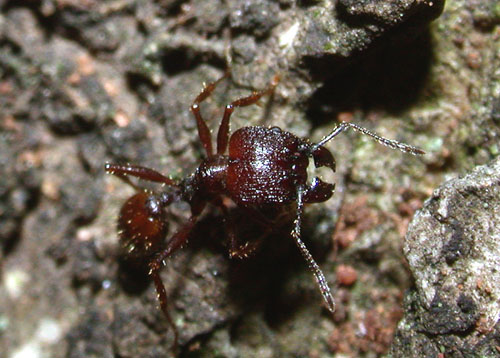
Pheidole sp. nr. jelskii, taken with the Nikon Coolpix 995
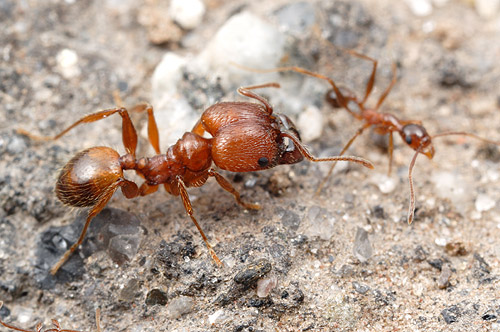
Pheidole sp. nr. jelskii, taken with a Canon dSLR macro system

Camponotus rosariensis, 2002
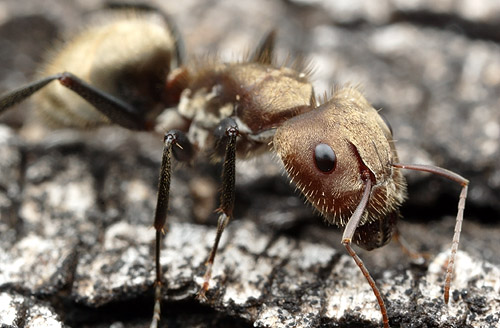
Camponotus rosariensis, 2009

Linepithema micans, 2002
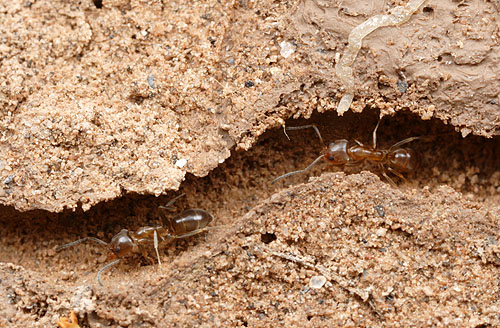
Linepithema micans, 2009

Pogonomyrmex micans, 2002
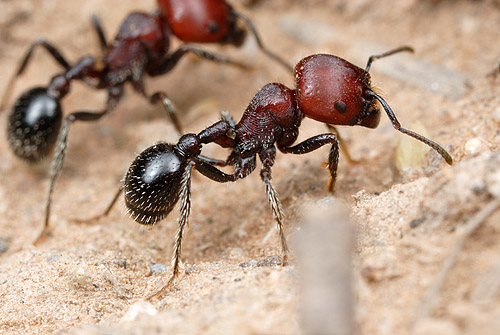
Pogonomyrmex micans, 2009

Ectatomma brunneum, 2002
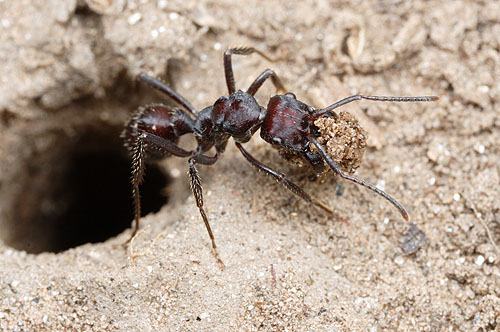
Ectatomma brunneum, 2009

It's like comparing black and white to color, or analog TV to digital hi-def.
Hint -- I hope you'll be getting some good ones of native eastern US Pyramica one of these days. I needed one recently but couldn't find just what I wanted.
Funny you should mention the Pyramica. We just brought a nest of P. rostrata in the lab, and I've got my camera in this afternoon.
Greatly enjoy this site and your photos. Alex, many thanks for the loan of some of your photos for "Future Earth" posts on Ant Analogies, duly credited. http://protectingourplanet.blogspot.com/search/label/Ant%20Analogies
http://myrmecos.files.wordpress.com/2009/06/lmicans2.jpg?w=500&h=328 looks cool. Are there more of these Ant Farms shots?